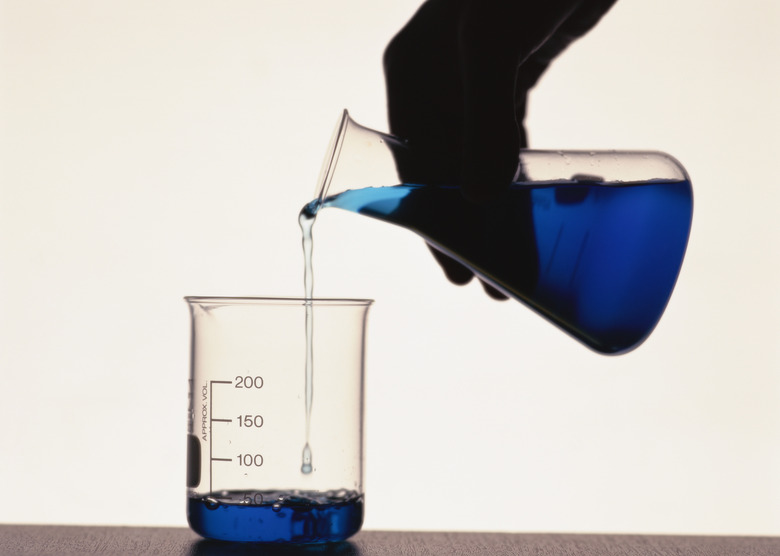Science Projects On Whether The Color Of Water Affects Its Evaporation
Though heat and humidity play a large role in determining water's rate of evaporation, other factors may play directly or indirectly affect this process as well. Science experiments questioning whether color can impact evaporation should account for factors like light, heat and humidity. This will help to determine whether color impacts the rate of evaporation directly, indirectly or not at all.
Control and Measure
Control and Measure
Temperature, humidity, light exposure and other factors play a role in a water's evaporation. In order to make sure your results aren't influenced by these factors, it's important you control and account for them. If, for example, you are need sunlight for your experiment, make sure each container receives the same level of sunlight.
The surface area of the liquid can impact the rate of evaporation and your measurements. To account for this, use containers of equal size. Measure the mass of each dry container individually. Subtract the mass of the container each time you measure the mass of water.
Color and Light
Color and Light
Fill seven glass beakers with 100 mL of distilled water. Add a few drops of food coloring to six of the containers until they represent the visible spectrum of light: red, orange, yellow, green, blue and violet. The uncolored water will serve as your control. Record the mass of the water.
Place the beakers on a windowsill that receives high levels of sunlight. Remove the beakers when the sunlight has faded, recording the length of time the beakers were in the sun. Determine the mass of the water.
Repeat the experiment with the same beakers full of water over the next two days, making sure to record the mass of the water before and after sun exposure. Create a graph of your results and note any differences between the mass of each color of water in your lab report.
Color and Heat
Color and Heat
Fill seven beakers with 100 mL of distilled water. Add food coloring to six of the beakers to represent the light spectrum and leave one uncolored as a control. Place the beakers on a hot plate.
Turn the hot plate on. Ideally, the temperature should fall just below around 95 degrees Celcius, allowing the water to heat, but preventing it from boiling over. Heat the water for 15 minutes, then turn the hot plate off. Allow the beakers to cool completely.
Measure the mass of the water in each beaker. Record your results. Note any differences in your lab report.
Color and Humidity
Color and Humidity
If your school has a low-humidity chamber, ask if you can use it for your experiment. If it does not, use a dehumidifier to remove most of the moisture from a dark, enclosed room until the hygrometer reads at around 30 percent. Leave the dehumidifier on for the duration of this experiment.
Fill seven beakers with 100 mL of distilled water. Color six of the beakers and leave one uncolored as a control. Place the beakers in the dehumidified room. Record the humidity of the room when you place the beakers in it.
Record the mass of the water and the humidity of the room once per day for three days. Create a graph of your results. Don't worry if the mass measurements are similar, as color is unlikely to interact with humidity in the way it would with light.
Cite This Article
MLA
Awana, Momi. "Science Projects On Whether The Color Of Water Affects Its Evaporation" sciencing.com, https://www.sciencing.com/science-projects-whether-color-water-affects-its-evaporation-12304792/. 24 April 2017.
APA
Awana, Momi. (2017, April 24). Science Projects On Whether The Color Of Water Affects Its Evaporation. sciencing.com. Retrieved from https://www.sciencing.com/science-projects-whether-color-water-affects-its-evaporation-12304792/
Chicago
Awana, Momi. Science Projects On Whether The Color Of Water Affects Its Evaporation last modified August 30, 2022. https://www.sciencing.com/science-projects-whether-color-water-affects-its-evaporation-12304792/
